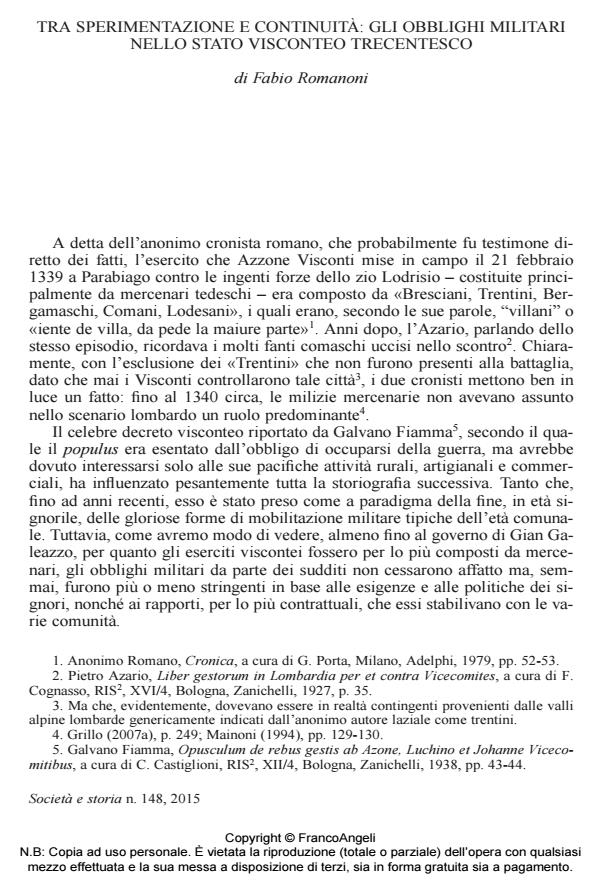Between tradition and experimentation: military obligations in the Visconti’s state during the fourteenth century
Journal title SOCIETÀ E STORIA
Author/s Fabio Romanoni
Publishing Year 2015 Issue 2015/148
Language Italian Pages 26 P. 205-230 File size 92 KB
DOI 10.3280/SS2015-148001
DOI is like a bar code for intellectual property: to have more infomation
click here
Below, you can see the article first page
If you want to buy this article in PDF format, you can do it, following the instructions to buy download credits

FrancoAngeli is member of Publishers International Linking Association, Inc (PILA), a not-for-profit association which run the CrossRef service enabling links to and from online scholarly content.
While seeing a strong increase in the presence of mercenaries in the ranks of the Visconti’s armies, the era of Luchino and Archbishop Giovanni was characterized by the survival of the traditional military obligations imposed on the urban and rural populations. The famous decree reported by Galvano Fiamma, according to which the population was exempt from conscription obligations and left free to pursue its peaceful rural activities, crafts and trades, has heavily influenced later historiography. However, at least until the reign of Gian Galeazzo subjects’ military obligations did not cease, if anything, they were more or less overlords stringent according to the needs and policies and the mostly contractual relations they stipulated with the various communities. Through the analysis of lords’ requests for armed contingents to be levied by the cities and communities of the area, one can explore the evolution of the "Visconti’s state", from a simple aggregation of individual territorial entities, to attempts to turn it into a more structured and uniform body. However, the picture presented is particularly complex. For instance, in the case of the co-seignory of Galeazzo II and Bernabò, the two lordships had divergent policies and projects as to the military deployment of the cives and comitatini. It is possible to observe that while at the time of Luchino and Archbishop Giovanni Visconti the been able to completely take away from the various communities the control of the military, leaving ample areas on the outskirts of the domain under the control of selfadministered militias, with Galeazzo II, and especially with Bernabò, these spaces were eroded. This was to lead to Gian Galeazzo’s project to create a sort of centrally controlled militia in all the cities under his domain.
Keywords: Medieval warfare; Visconti; Galeazzo II; Bernabò; Gian Galeazzo; local militias
Fabio Romanoni, Tra sperimentazione e continuità: gli obblighi militari nello stato Visconteo trecentesco in "SOCIETÀ E STORIA " 148/2015, pp 205-230, DOI: 10.3280/SS2015-148001